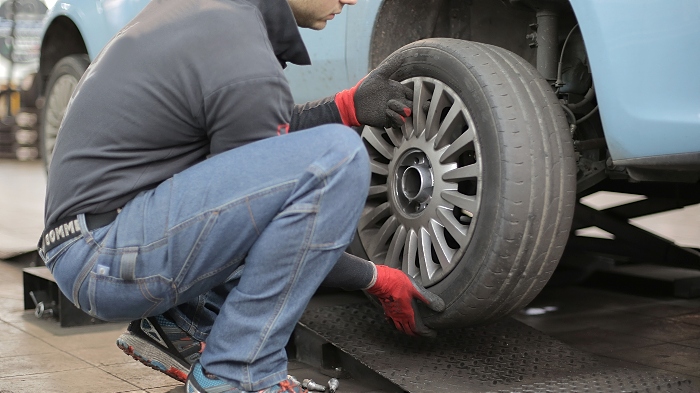
Car maintenance is something of a hobby for many people across the UK, but this is certainly not the case for every driver.
Indeed, the vast majority of motorists in the UK have relatively little interest in the specifics of caring for their vehicle; their car is a means to an end.
An inability to recognise the signs of an imminent breakdown or issue can be dangerous and even costly – an effect compounded by the prediction that many UK drivers will be delaying vehicle services in order to make short-term savings during the cost-of-living crisis.
In fact, delaying servicing and repairs can cause costs to multiply, making car ownership much more expensive over time.
Here, we will focus in on one particular aspect of car maintenance – namely, tyres and tyre replacement.
It is easy to source a new set of tyres online at your leisure, but this is understandably an expense that many would like to avoid for as long as possible.
But what is too long? What should you be looking out for in your existing tyres before stumping for a set of replacements?
#1 – Low Tread Depth
Firstly, it is important to understand the legal part of the equation with regard to your car’s tyres.
Motoring law dictates that your tyres must have a tread depth of more than 1.6mm in order to be road legal.
This is to guarantee that all vehicles on UK roads have safe levels of traction.
A simple way to measure your tyre tread depth is to stand a 20p piece in one of the grooves towards the centre of each tyre.
The outer band of the 20p coin is 1.6mm deep; if you can still see some of the band above the tread, your tyres are illegally worn.
#2 – Sidewall Cracking
Sidewall cracking is a form of tyre deformation that can occur for a number of reasons, from underinflation to sun damage and weathering.
Sidewall cracks might start to appear from undue stress being applied to the tyres. A common cause is underinflation and extended periods of disuse.
On top of this, UV damage can reduce the flexibility of your tyres, increasing the risk of cracking as opposed to bending.
Changes in temperature and the infiltration of road water can worsen your cracks, and potentially lead to a blow-out.
#3 – Unusual Feel and Sound
Sometimes the proof can simply be found in how the tyres ‘feel’. When driving, are there any unusual vibrations emanating from the wheels?
Bumping or over-vigorous vibration can be a sign of imbalanced tyres, whether one tyre is more worn than the others or your tyres have deformed.
Sounds can be just as telling here, particularly where whining can indicate a puncture.
#4 – Over Five Years Old
Lastly, if your car tyres are more than five years old, they may well be due for a change anyway.
Even if you take the best possible car of your car, UV damage and exposure to the elements can still serve to weaken your tyres.
Replacing them regularly ensures that you are never put in a difficult position by tyre failure.
(pic by Andrea Piacquadio under free licence https://creativecommons.org/licenses/publicdomain/)


















Recent Comments